Know Your Lore: Witchcraft in Warcraft
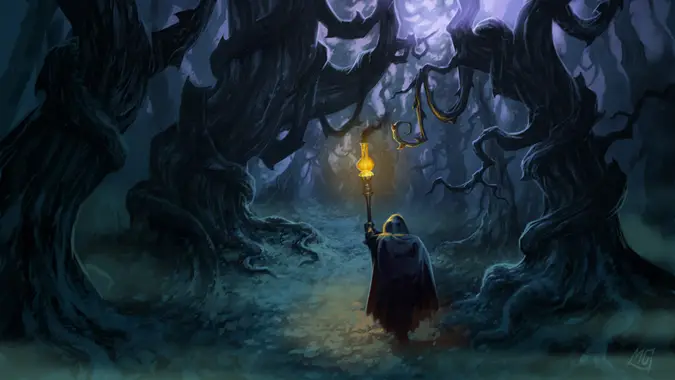
Hearthstone’s next expansion is called The Witchwood — but the name is a new one, given to what was once the Blackwald in Gilneas. Why the change? Witches, of course — specifically one witch called Hagatha, who has twisted the woods to her own designs. But she’s not the first witch we’ve encountered in Warcraft, nor will she be the last. In fact, Gilneas has a pretty lengthy history with witches, druidism, and even Kul Tiras, as it turns out.
Although Hearthstone’s lore tends to operate pretty independently of what we see in WoW, in this case the new expansion is surprisingly relevant. With the upcoming addition of Kul Tiras in Battle for Azeroth, it’s worth giving the history of witches in Gilneas and beyond a closer look.
Please note: There are some small spoilers for Battle for Azeroth in today’s Know Your Lore. No major story or plot points, just a discussion of Kul Tiran history. However, if you’re actively avoiding spoilers, you may want to come back to this column at a later date.
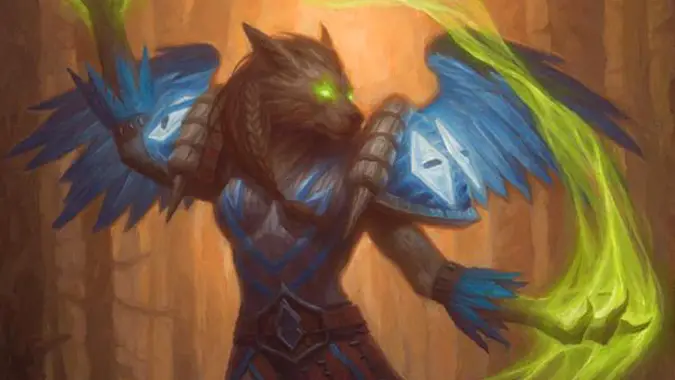
Harvest-witches of Gilneas
Early on in humanity’s development on Azeroth, some Humans displayed an affinity for simple nature magic. While this was nothing as complex or powerful as the shapeshifting, spellcasting magic of Druids, it was still noteworthy. But the practice of nature magic didn’t stick with humanity. Instead, the rise of both arcane studies — and more importantly the worship of the Holy Light — soon outweighed the benefits of any minor natural magic.
There were those in Gilneas that still practiced the old ways. These people were eventually dubbed “harvest-witches,” due to the nature of their magic. Typically, their skills were utilized within farming communities as a way to augment agricultural development. Cut off from the rest of the world as Gilneas was, it’s easy to see why some still clung to the old ways. As a firmly independent nation, Gilneas was wholly responsible for its own resources. Anything the kingdom’s people could do to help supplement the production of said resources was a boon.
But the release of the Worgen played chaos on the kingdom. Not only were its people under threat by the Worgen curse, they were also introduced to Night Elf Druids. These Druids displayed much the same nature magic as the harvest-witches, albeit more powerful. Because of this, some started using the terms harvest-witch and Druid interchangeably, assuming they were the same thing. Harvest-witches inflicted with the Worgen curse suddenly found their natural powers amplified. They were later inducted into the Cenarion Circle as full-fledged Druids in their own right.
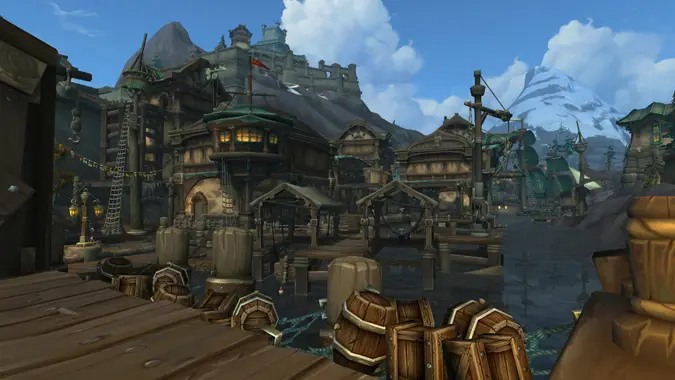
Kul Tiras
Gilneas wasn’t the only semi-isolated kingdom out there. In fact, some Gilnean sailors eventually ended up founding a nation of their own. After the Troll Wars, the Humans of Arator splintered into various regions, including Gilneas. Some Gilnean sailors ended up leaving Gilneas and sailing for unknown waters, eventually stumbling on an island rich with minerals and other resources. Nestled in the waters between Gilneas, Stormwind, and Lordaeron, it was at a perfect vantage point for a trading post.
These sailors eventually built a strong, stable maritime outpost, and they called it Kul Tiras. The city-state became one of the seven kingdoms, thriving from its fishing and exports trade. Although not a kingdom in the proper sense of the word, the city-state was ruled by a Lord Admiral — a noble, rather than royalty. During the Second War, Lord Admiral Daelin Proudmoore joined the Alliance of Lordaeron. He offered his fleets to assist in the eradication of the Old Horde. Although the Alliance proved the victor in the Second War, Daelin lost his son Derek to the Dragonmaw Orcs in the process.
Kul Tiras remained a supporter of the Alliance — but when Lordaeron fell in the Third War, Daelin realized there was nothing he could do to prevent it. Instead, he set out in search of his daughter Jaina, who had commandeered a Kul Tiras fleet and set sail for Kalimdor with Lordaeron’s survivors. The rest of the tale is grim. After arriving in Theramore and discovering his daughter’s dealings with the Horde, Daelin seized Theramore. Unwilling to listen to his daughter or her reasoning, he was eventually killed by Horde, while Jaina stood aside.
News of his defeat eventually reached Kul Tiras. Believing they no longer needed the Alliance, the kingdom withdrew, and wasn’t heard from again for years.
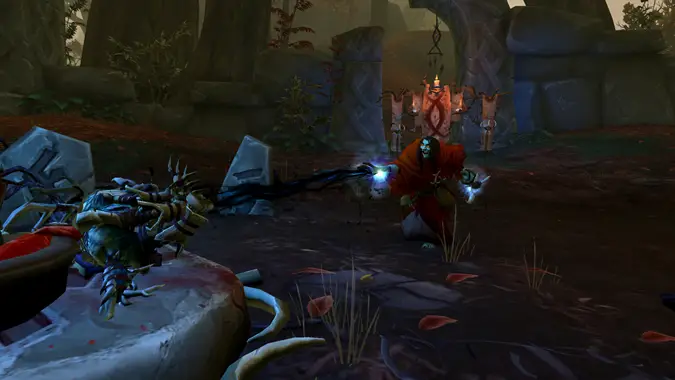
Witchcraft, Druidism, and humanity
Although the two kingdoms aren’t commonly thought of as connected, the history of Kul Tiras is tied to Gilneas. One can presume that just as Gilneas had its harvest-witches, some of those Humans with that affinity for nature made their way to Kul Tiras as well. But even if they did settle on the shores of Kul Tiras, they definitely didn’t use that name. The word “witch” has a decidedly different connotation in the maritime kingdom — and a different reputation as well.
Folklore surrounding witches in Kul Tiras — specifically Drustvar — is based on fear. Kul Tirans think of witches as evil, twisted creatures. Little is said of any magical affinity for nature. Instead, rumors abound regarding witches. They’re filled with dark spirits. They never sink in water, even if strapped with weights. They’re immune to fire, and they never cry. Even the blood flies won’t bite them, because their very blood is tainted and vile. It’s an entirely different outlook.
So is Druidism. While the Night Elves are considered responsible for Gilnean Druidism, it’s an entirely different story in Kul Tiras. When Humanity first settled on Kul Tiras, they discovered they weren’t the first sentient creatures to set foot on the island. Another race, the Drust, already populated the region. The Drust practiced magic — Druidic in nature, but tied to death rather than life. Although the Humans tried to make peace with the Drust, they were rewarded with all-out war. Eventually, the Drust were defeated and died out entirely. But their spirits live on…and they want vengeance.
It seems that there are still parallels between Gilneas and Kul Tiras. While Gilnean Druids are a result of the Worgen curse inadvertently unleashed by Night Elves, Kul Tiran Druids are likely tied somehow to the Drust.
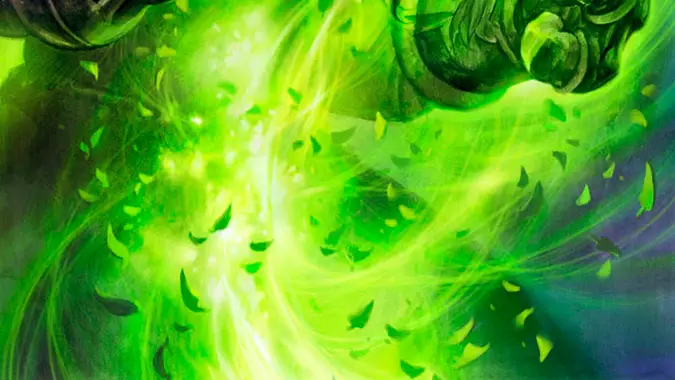
Natural magic
What can we gather from these separate pieces of history? To put it bluntly, Humans aren’t really meant for natural magic. They can practice it to some minor degree, but mastery of it requires outside intervention. And that makes perfect sense, really. We may think of Humans as a native Azeroth species, but history tells a different tale. Humanity is descended from the Vrykul, a race of titan-forged. They come from a bloodline based not in the natural world, but in Titan creation.
Early art of the Drust almost makes them appear as if they have some kind of ties to the Vrykul as well. But we don’t really know about their extended history — they may be just as native to Azeroth as the Trolls and the Night Elves. Given the nature of their magic, I’m inclined to lean towards them being Azeroth natives. Of course, I could be wrong. We’ll have to wait and see if we get more history regarding the new race once Battle for Azeroth arrives.
As for witchcraft — the word “witch” has a variety of different meanings on Azeroth. Some are definitely wicked creatures, bent on using destructive magic for their own dark purposes. Others are simply using a gift, small as it might be. One that ties them to nature, and to Azeroth, in an unconventional way. Humanity has always shown a peculiar proficiency for magic on Azeroth, whether it be the mysteries of the arcane, the staunch worship of the Holy Light, or a latent gift that helps the world grow. It’s how that magic is used that determines whether one is dealing with a good witch…or something a little more wicked in nature.
Please consider supporting our Patreon!
Join the Discussion
Blizzard Watch is a safe space for all readers. By leaving comments on this site you agree to follow our commenting and community guidelines.
 @Shadesogrey
@Shadesogrey



